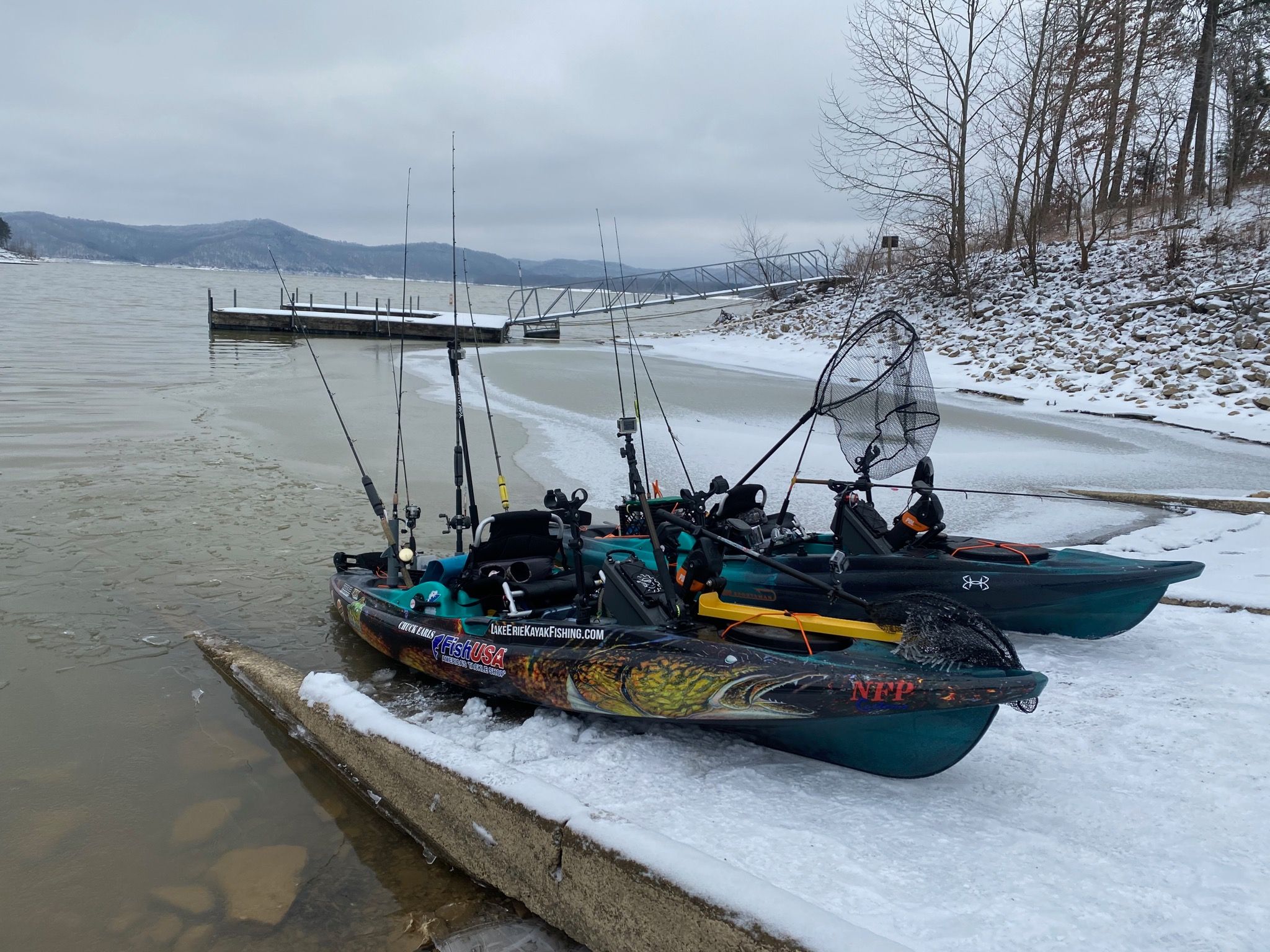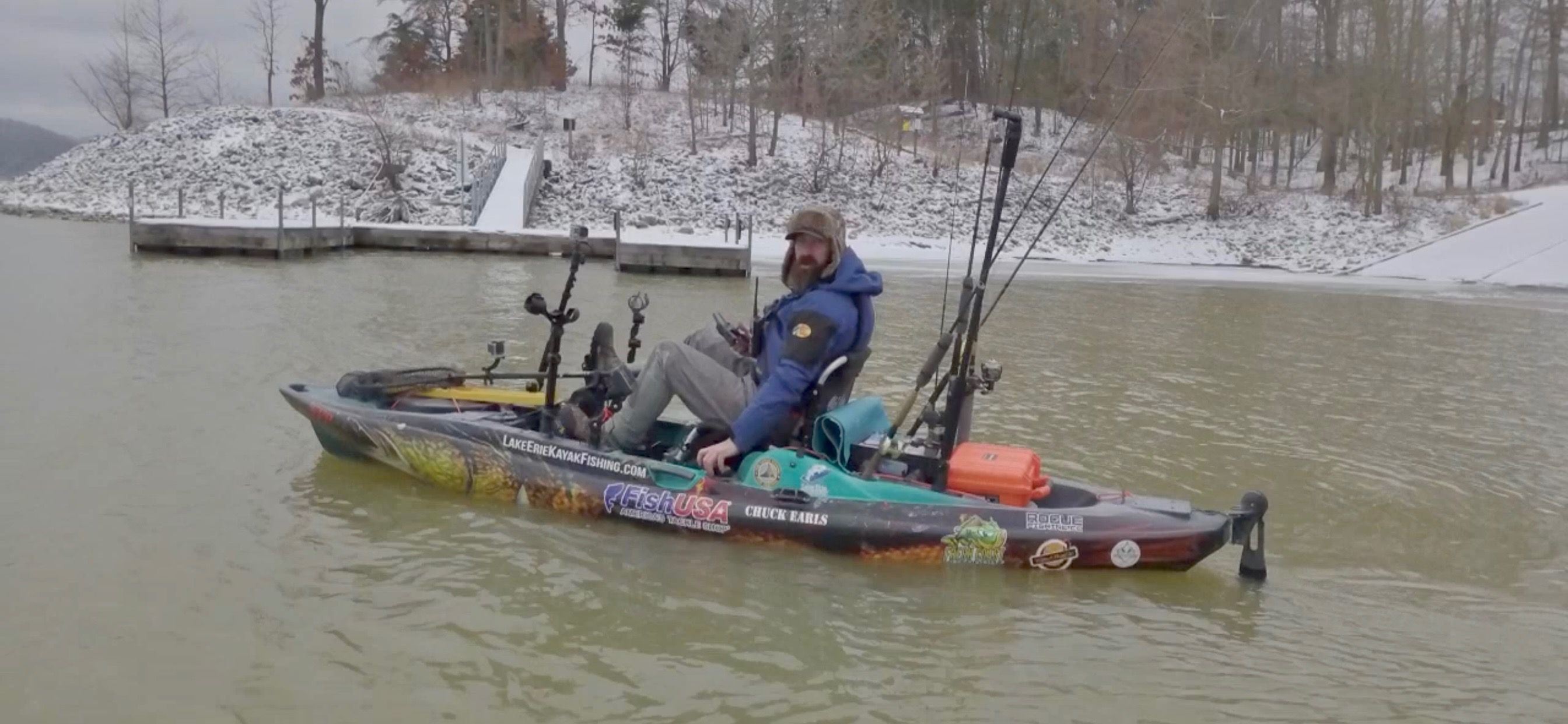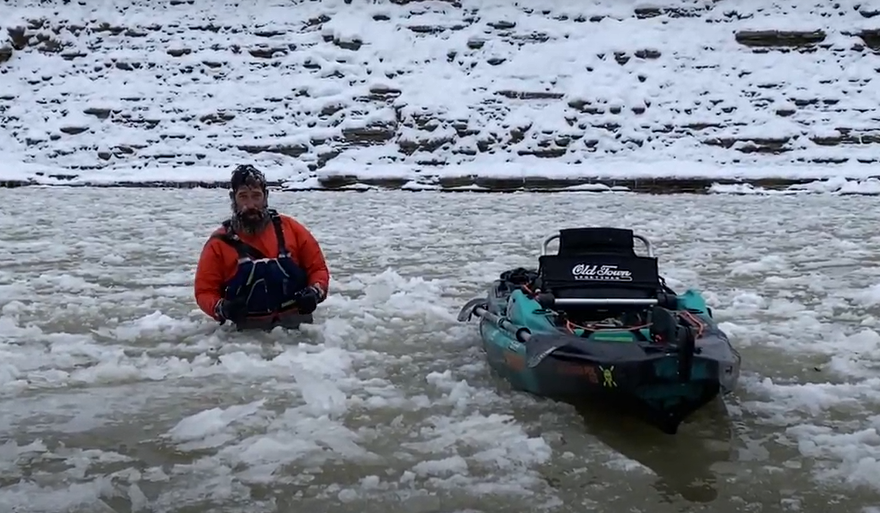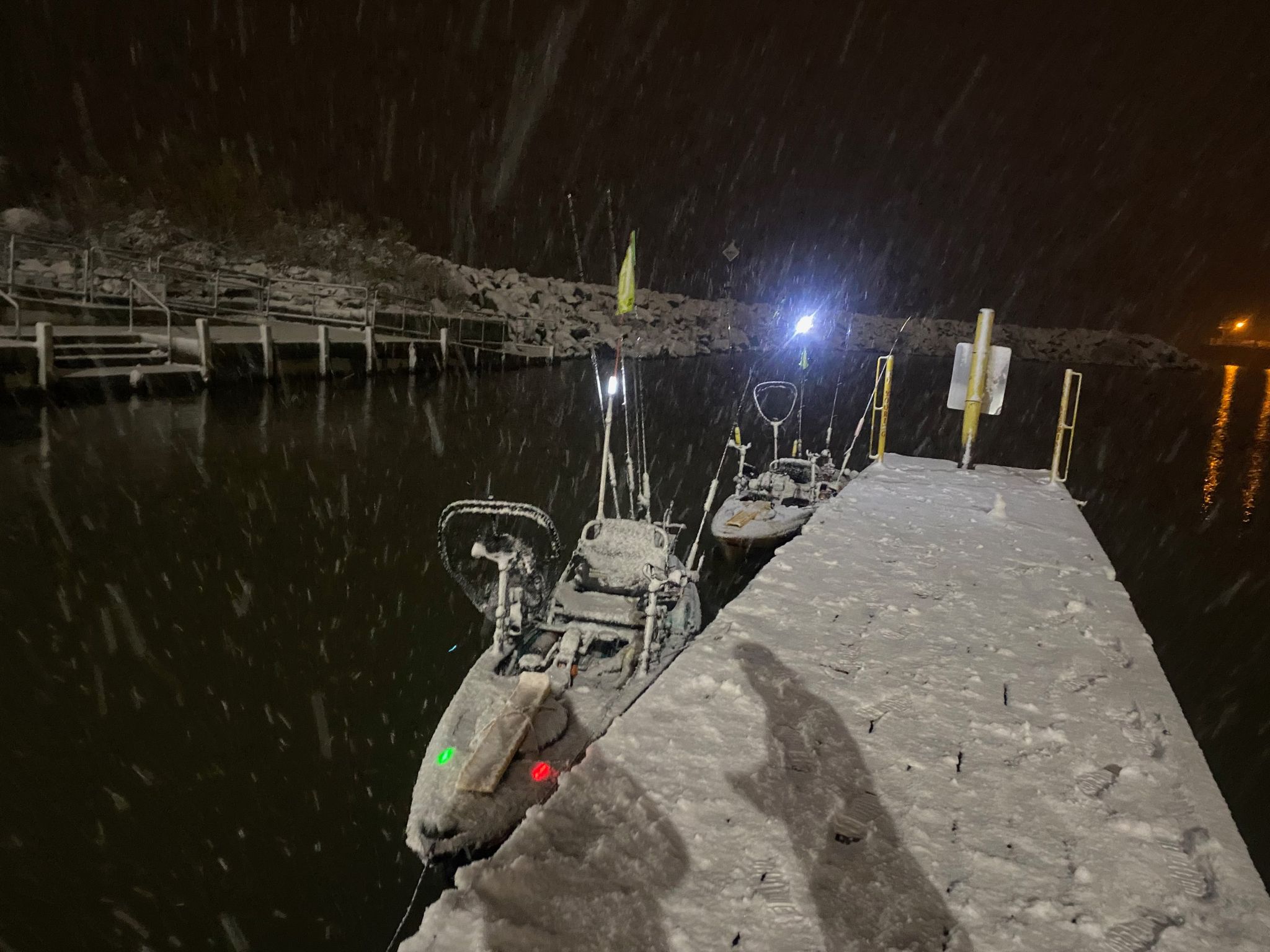Kayak Fishing on Cold Water can be deadly, but DRYSUITS SAVE LIVES!!
Cold water season is here, bringing some of the best fishing of the year but it is also the most dangerous time of year. Fortunately, it is possible to fish safely with the proper gear until the lake freezes. In this article, I’ll teach you how. (The hyperlink below will take you to all the invaluable resources associated with this article.)
https://lakeeriekayakfishing.com/cold-water-kayak-...
First, let’s get familiar with the dangers cold water presents. The most important rules to live by are to ALWAYS wear your PFD or Life Jacket, dress for the swim, and frequently practice self-rescue. Never assume it will not happen to you because it can, and it will. If you are not prepared when the situation arises, you may not make it back home… It’s our families and loved ones that suffer. That is why I always practice self-rescue, kayak re/entry, and frequently swim test my safety gear.
The moment you enter the frigid water, you INVOLUNTARILY GASP, filling your lungs with air or water if your mouth is below the water’s surface. (common when not wearing a PFD - Personal Floatation Device) If that’s the case, when this happens, your lungs will fill with water, and you will immediately drown and sink to the bottom. Wearing your PFD, you will most likely survive the involuntary gasp reflex but experience a dangerously rapid blood pressure spike. This can cause many potential issues, including cardiac arrest. (Use the hyperlink below to listen to Michael Paoletta’s NEAR DEATH experience with early cold water in October 2020)
https://open.spotify.com/episode/4EwbC3Cs6VpoUAOlB...
Next, you will move into MAXIMUM INTENSITY COLD SHOCK. This consists of two to ten intense minutes of uncontrollably gasping for air in an attempt to catch your breath. Once your breathing is under control, you can now attempt self-rescue. At this point, you have been in the water for a few minutes, and the frigid water has been silently taking its toll on you, rapidly wicking away your core body temperature and causing rapid loss of your motor skills.
It’s time to attempt to re-enter your kayak. Even the most healthy and fit people will be physically exhausted at this point. Your arms and legs will not work properly, and your mind will become foggy. Maybe you’ve never attempted self-rescue before, but how hard can it be? - right? (Scan the QR code and learn Re-Entry and Self Rescue)
The first attempt did not work. You try to make a second attempt, but your body will not cooperate. All you can do now is hold onto your life jacket and hope that somebody finds you because if not, this is the end of the road.

Here’s how to protect yourself and prevent the scenario above: The most critical piece of Cold-Water Safety gear is your DRYSUIT. A drysuit is a waterproof outer layer with latex wrist and neck gaskets with either latex ankle gaskets or booties to create a watertight seal around your body. There are also SEMI-DRYSUIT options. These have a more tolerable neoprene neck gasket vs. restrictive latex neck gaskets. (Using a soccer ball inside the latex neck gasket a few days before your trip will pre-stretch it and counteract some of the strangulation feeling caused by the tight latex neck gasket). The neoprene neck gasket is not 100% watertight. If not cinched down properly, you may experience a small amount of water down your neck, just enough to wake you up. That being said, I’m wearing the Kokatat Hydrus Supernova Angler Semi-Drysuit in all my drysuit testing videos.
Drysuits are designed to keep you dry, not keep you warm, so you must assemble the right set of INSULATING LAYERS to wear under your dry suit to keep you warm. Proper underlayers consist of materials like polyester, merino wool, fleece, nylon, and other high-insulating synthetic fabrics. NO COTTON!! Cotton garments are poor insulators; when saturated, they dry much more slowly and lose their thermal regulating properties.
A WETSUIT can work but must be of a higher thickness. Wetsuits are designed to trap a layer of water between your skin and the wetsuit. Your body warms that water up, creating a cavity of warm water between your wetsuit and skin, preventing any new cold water from entering. If you do not have that layer of water between the wetsuit and your skin when you hit the water, cold water will rush into your wetsuit, causing some of the same cold water dangers. When primed with warm water, a wetsuit can protect you from the frigid waters, but there may be a better fit for the kayak angler.

Tips, Tricks, and Advice for Cold Water Kayak Fishing:
Carry two pairs of gloves in case one set becomes wet. Stuff hand warmers inside your gloves for an instant warm-up after that monster fish catch. Assemble an emergency cold water survival dry bag containing a complete change of clothes, socks, and winter hat, as well as an emergency space blanket and multiple ways to start a warming fire. For extremely cold days, stick an extra-large “HotHands” pad in between your base layer near your chest. Stuff hand warmers under your wrist cuffs to warm up the blood flowing to your hands, keeping them functional. Using antiperspirant on areas where your body sweats greatly helps keep you dry and warm throughout the day. Cheap baselayers and midlayers can be found at thrift shops by choosing suitable fabrics. Neoprene baklavas/neoprene facemasks work wonders. Take the time to check out all the videos through the QR Code, they will make you better prepared and teach you what you need to know to survive and make it back home to your loved ones. And lastly, swim test your safety gear often! A failure could cost your life. If you are not able to justify the expense of buying a dry suit for yourself, then do it for your family, they are the ones who’ll suffer long after we’re gone. Fishing is life, but SAFETY comes FIRST!! See you on the water!!
Article by: Chuck Earls, Lake Erie Kayak Fishing Adventure (216) 296-9157


